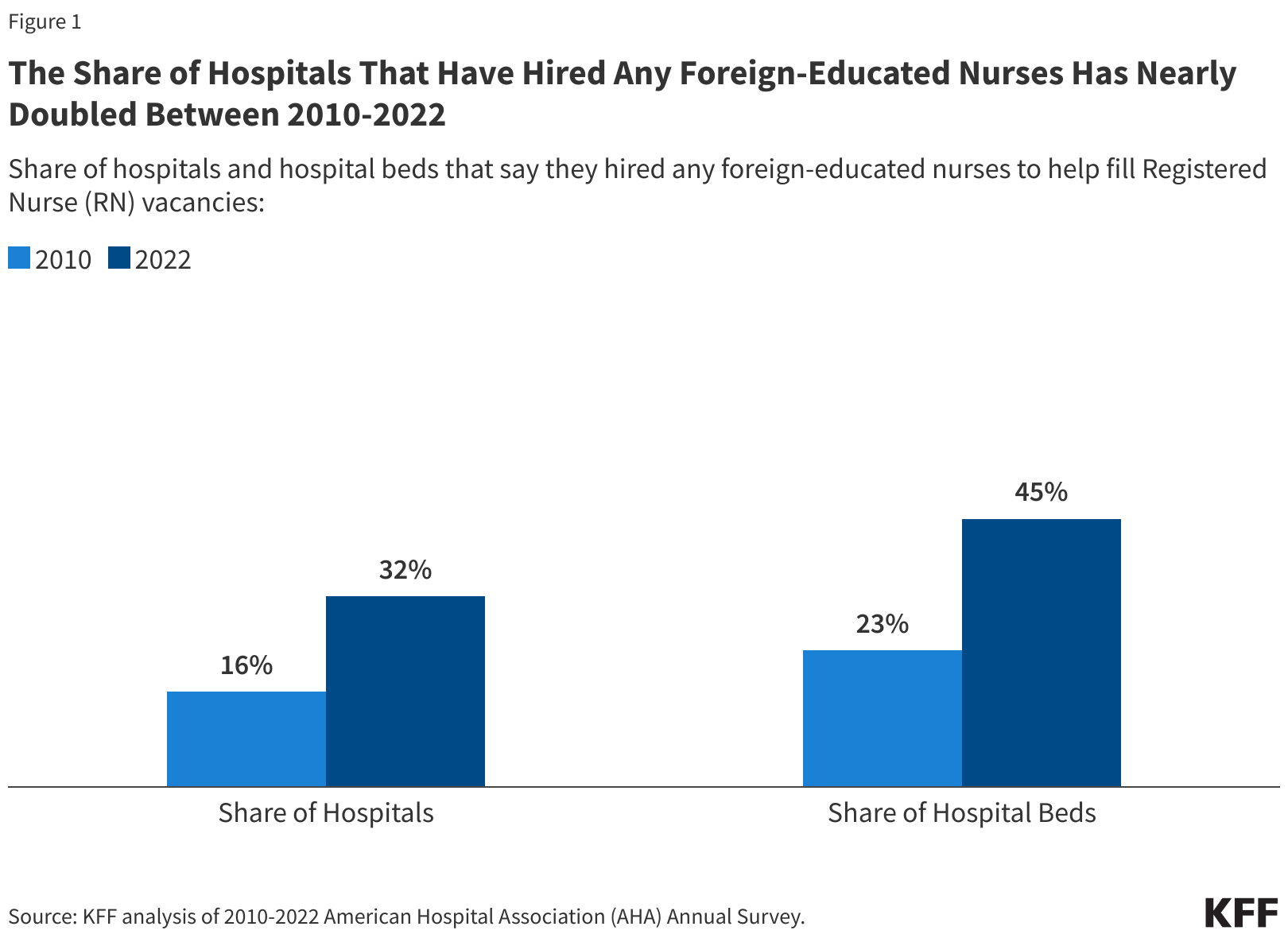KFF on Immigration of RNs
Since the COVID-19 pandemic, there has been a shortage of Registered Nurses (RNs), This may continue to grow over the next decade as there becomes an increasing need for healthcare. Demands for nurses will increase to meet the new requirements for nurse staffing levels within nursing home facilities.
Immigrant workers could potentially address this crisis and fix the damages. As of 2022, there were about 500,000 immigrant nurses in the U.S., which accounts for about one-sixth of the 3.2 million RNs. Trump stopped processing new visa applications for international nurses which caused delays. Republicans are stalling legislation remains to increase employment-based visas for nurses.
Through H-1B visas, visa opportunities could be expanded through administrative actions. However, these visas have limitations, and these restrictions could “exacerbate existing shortages in the nursing workforce and negatively impact the U.S. labor market and the economy more broadly, particularly given the growing role of foreign-educated nurses in U.S. hospitals.”
Through a KFF data analysis from the American Hospital Association (AHA) Annual Survey, results show that the overall share of hospitals hiring foreign-educated RNs has nearly doubled between 2010 and 2022, and a growing share of hospitals have been hiring an increasing number of foreign-educated RNs to fill vacancies over time.
Overall, the data shows that there has been an increase from 32% to 16% of hospitals hiring foreign-educated RNs, which represents an increase from 23% or 42% of all hospital beds. (Figure 1). Additionally, the share of hospital beds that have hired more foreign-educated nurses to fill in RN vacancies, compared to the previous year, rose 2% with a 3% increase of hospital beds in 2010 and 14% with a 22% increase of hospital beds in 2022. (Figure 2).



Recent Comments